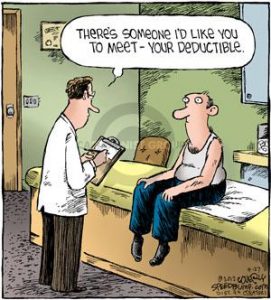Healthcare is going direct-to-consumer for a lot more than over-the-counter medicines and retail clinic visits to deal with little Johnny’s sore throat on a Sunday afternoon. Entrepreneurs recognize the growing opportunity to support patients, now consumers, in going shopping for health care products and services. Those health consumers are in search of specific offerings, in accessible locations and channels, and — perhaps top-of-mind — at value-based prices as defined by the consumer herself. (Remember: value-based healthcare means valuing what matters to patients, as a recent JAMA article attested).

At this week’s tenth annual Health 2.0 Conference, I’m in the zeitgeist of healthcare shopping. Ten years in the making, this conference enters a new decade where patients now take on roles of clinical decision making, along with better understanding what health care products and services will cost. This is because in 2016, as compared with 2007, 51% of US consumers with health insurance have to deal with a deductible (and even more workers who are employed in small companies). This is a new role for American patients, who now must take on a new hat: that of the healthcare payor.
I’m gratified to see a growing roster of entrepreneurs who are focusing on helping patients become rational health consumers, providing price transparency, well-designed portals, and streamlined access to on-ramps for fair-priced care. Today at the Conference, I’ll shepherd a panel called The Health Care Marketplace: Smart Shopping for Your Overall Care. The five panelists will offer live demos of their websites, which span services from doctor visits to digital imaging and health insurance. Amino, Healthcare Bluebook, Stride Health, Stroll Health, and Vitals all play a role in this important, expanding healthcare segment to serve consumers and better align health pricing information and accessible, more personally-relevant, services.
 Health Populi’s Hot Points: About one in 3 US consumers now shops for healthcare, according to UnitedHealthcare’s Consumer Sentiments Survey. Healthcare shopping behavior is reaching a tipping point of becoming a normal part of consumers’ retail lives, like price-comparing media, consumer electronics, and cars.
Health Populi’s Hot Points: About one in 3 US consumers now shops for healthcare, according to UnitedHealthcare’s Consumer Sentiments Survey. Healthcare shopping behavior is reaching a tipping point of becoming a normal part of consumers’ retail lives, like price-comparing media, consumer electronics, and cars.
The cartoonist Dave Coverley created the comic here with the scenario of a doctor introducing a patient to “someone I’d like you to meet – your deductible.” Here in 2012, Coverley has uncovered an emerging popular culture meme: healthcare costs are the #1 pocketbook issue for Americans today. Expect more digital health tools, apps, and sources that look to help ease this paying patient’s financial wellness and overall health.





 Thank you,
Thank you,  As a proud Big Ten alum, I'm thrilled to be invited to meet with the OSU HSMP Alumni Society to share perspectives on health care innovation.
As a proud Big Ten alum, I'm thrilled to be invited to meet with the OSU HSMP Alumni Society to share perspectives on health care innovation. I was invited to be a Judge for the upcoming CES 2025 Innovation Awards in the category of digital health and connected fitness. So grateful to be part of this annual effort to identify the best in consumer-facing health solutions for self-care, condition management, and family well-being. Thank you, CTA!
I was invited to be a Judge for the upcoming CES 2025 Innovation Awards in the category of digital health and connected fitness. So grateful to be part of this annual effort to identify the best in consumer-facing health solutions for self-care, condition management, and family well-being. Thank you, CTA!